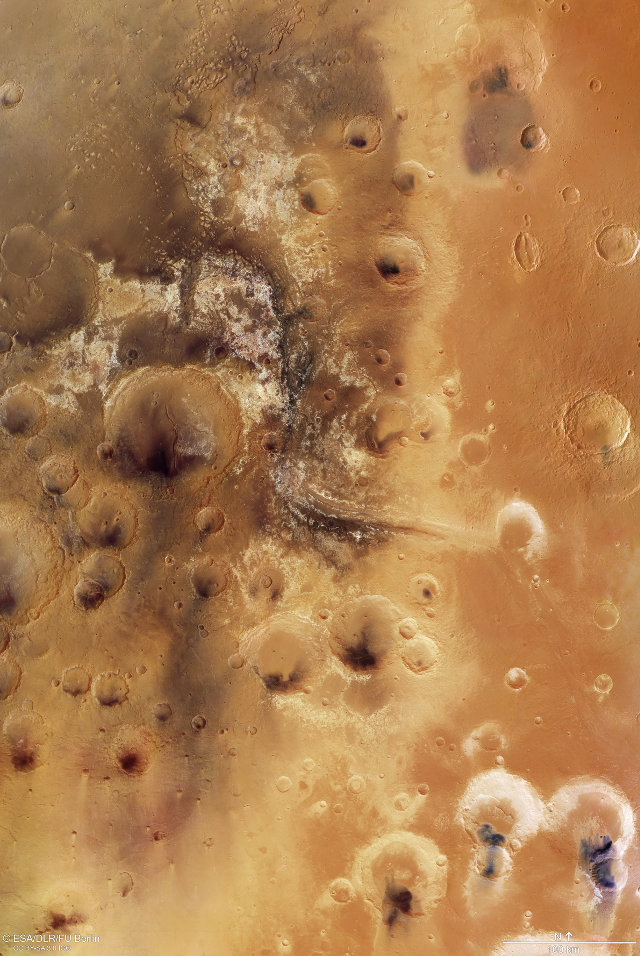
The German space agency DLR has published new photographs of Mawrth Vallis, a large valley on Mars where there are traces of the ancient presence of liquid water. It’s not a surprise because for years scientists have known the presence of phyllosilicates, clay minerals that can only exist where there was water. A view created using a mosaic of nine imagine taken by ESA’s Mars Express space probe’s HRSC instrument shows Mawrth Vallis in all its glory.
Mawrth Vallis is one of the largest valleys of Mars and has a depth of up to two kilometers below the standard reference zero-elevation level on Mars, the equivalent of sea level on Earth. The valley is part of the Oxia Palus quadrangle, is connected to the Arabia Terra highland and ends in the Chryse Planitia lowland. These and other nearby areas are among those that according to some researchers were struck by ancient mega-tsunamis.
NASA’s Mars Reconnaissance Orbiter (MRO) space probe also examined Mawrth Vallis several times in the course of its mission and its spectrometer identified aluminum and iron-rich clays. Among the identified clays there are montmorillonite, kaolinite, and nontronite, which on Earth are found in volcanic rocks and hydrothermal systems where there’s interaction between volcanic activity and water.
Mawrth Vallis has been one of the candidate areas to the landing site of NASA’s Mars Rover Curiosity. It’s currently among the candidate areas for the landing of the next rovers: that of ESA and Roscosmos’ ExoMars mission and NASA’s 2020 Mars mission. That’s precisely because it’s a very interesting area from the geological point of view but potentially also biological, or rather xenobiological, because clay minerals may preserve or at least have preserved for some time microscopic life forms.
The image published by DLR includes a large area of about 330,000 square kilometers. It was created by putting together nine different images taken by the Mars Express space probe’s HRSC (High Resolution Stereo Camera) instrument. In ancient time, Mawrth Vallis was a potentially habitable place. Today we see the variety of its geological features ranging from traces of volcanic ash with almost black clay deposits.
The clay minerals with their different compositions show different ages and levels of erosion. The presence of silicates indicates the effects of liquid water on the surface and conditions which were originally favorable to life. According to estimates, there was water in the area about 3.6 billion years ago and there may still be traces in clay deposits. In short, Mawrth Vallis is an area that will keep on being studied carefully and sooner or later some agency will choose as a place of landing a rover that they can carry direct analysis.

